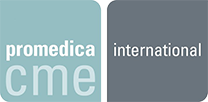Rosario, ArgentinaÂ
5 million patients suffer from heart failure in EEUU, 500,000 new patients every year, and the expected survival is 35% (class3/4) at 5 years .The current treatment options include medications, cardiac resynchronization therapy, destination VAD therapy and cardiac transplantation.
In March 2003 we started the first clinical trial to compare patients with an OPCAB operation alone vs. OPCAB plus autologous stem cells (CD 34+ CD45-) implanted by direct surgical application. At 6 months, we found that the second group improved their ejection fraction more than 30% compared with the patients that received OPCAB alone. In the next series, we used direct surgical application of autologous stem cells (CD 34 + CD 45 -) not only by sternotomy but also minimally invasively through a scope. Additionally in January 2005 we did another trial in 10 patients where we used for the first time direct surgical implantation of embryofetal stem cells between 5 to 12 weeks of gestation.
The operative mortality for the 29 patients that received autologous stem cells from different approaches was 1 patient. In the embryofetal group, the operative mortality was zero.
In the long term at 4 years, the mortality for the autologous group was 4 patients: 3 from cardiac causes and 1 from pulmonary infection. The initial average EF was 30% and, at 4 years, 38% for the ischemic patients and 27% and 36% for the patients with idiopathic cardiomyopathy. The survival at 4 years was 90% for the total series. Â
In the group of patients who received embryofetal stem cells, the initial mortality was 0 % and in the long term 4 patients died: 3 for cardiac causes and 1 from diabetes complications The average initial EF was 26% and at 2 years and 7 months increased to 37% The survival is 60%.
In conclusion, direct surgical stem cell implantation is an alternative for heart failure patients. Both types of cells work, apparently for different mechanisms: the autologous cells by a paracrine effect and angiogenesis and the embryofetals by making new cells (in 4 of the embryofetal cell patients we achieved total remodeling of the ventricle in 3 months).
More studies are needed to confirm these initials observations and learn more about the type of cell in each situation, but without doubt we can say that both improve myocardial function and cellular activity. Surgical epicardical injection in the beating heart also improves the clinical symptoms of angina and heart failure, is safe and non-arrhythmogenic with sustained improvements of the EF in the long term. In conclusion, we think that direct surgical injection of stem cells is an alternative for many patients with heart failure.

Hi, Its an extremely exciting field, I am very keen to be involved, It has enormous implications, I am v keen to start this therapy at my centre, let me have as much detail as possible. All the best for the future, Thanks.
Fede: Te Felicito por tu Blog.Un gran abrazo y nos vemos pronto
José Luis..
Dear Federico,
Your vision and enthusiasm in this field are inspiring.
Thank you to sharing such interesting data.
Luca
Dear Federico,
Congratulation for this interesting work and encouraging results. Really it is an innovative and exciting work. It would be my pleasure if I can participate in any trials in the the future.
My best regards
Nasri Alotti
ZALAEGERSZEG. HUNGARY
Thank you for this interesting report. What is your next protocol?
Federico
It has been a long time since we have communicated. I hopw all is well. It is exciting to see your work continuing in this field. Thank you look forward to further communication. Please contact me so we can talk.
Federico,
This is very exciting news. Your results are very encouraging for the treatment of heart failure and hopefully may be applicable to other types of heart failure.
I would be very interested in participating in future trials with you
Thanks for the innovative work
Mercedes
Dear Federico
So interesting work and encouraging results.
Congratulations for your inspiring blog and it will be a pleasure to participate in future trials with you.
Regards
Juan
Federico,
I have been following your work as well as others in this area of cellular regenerative therapy. As you may recall I have been approaching this from the use of ECM (extracellular matrix) for myocardial regeneration and angiogenesis. The literature is rapidly growing and is exciting to watch.
I would like to invite any surgeon, cardiologist, or researcher interested in the area to a 4th in a series meeting to address the translational work being done in cardiovascular tissue engineering and regeneration. Formerly Cardiac BioInterventions, it is now GPC (Genomics, Proteomics and Cell Therapy)and will be held February 10, 2008 in Phoenix, Az. It will immediately precede the Endovascular Congress at the Phonecian Resort.
The meeting will feature current cell therapy, clinical trials, basic science and regulatory issues facing the field.
Please feel free to contact me for more information and we’d like to see you there and hear about your work.
r matheny md
Dear Frederico,
It is nice hear from you and know you are involved in cellular regenerative therapy using OPCAB with encouraging results. Keep in touch.
My best regards,
Ricardo Lima
Universidade de Pernambuco
Brazil
I would be interested in the Phoenix meeting in Feb 2008.
Dear Dr Benetti:
Do you have any publications of your work in peer review journals?
If you do, could you be so kind to send me the references?
A. Chaux, MD.
I am very much interested in this field,we have performed OPCAB in nearly 500 patients with ischemic heart failure but want to learn about stem cell isolation and application.I have not been able to get any help in this for the last 2 years.Can any one help???